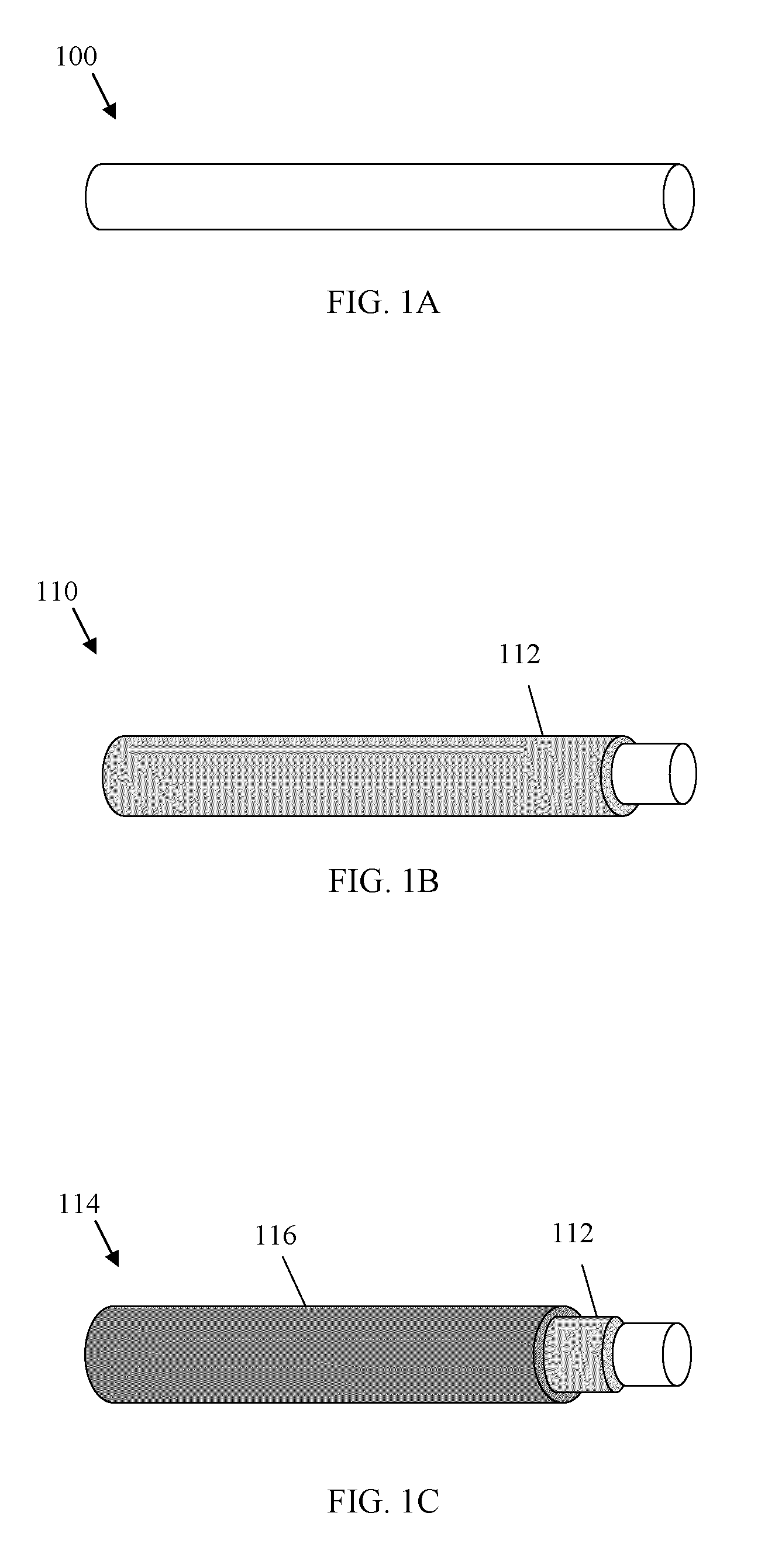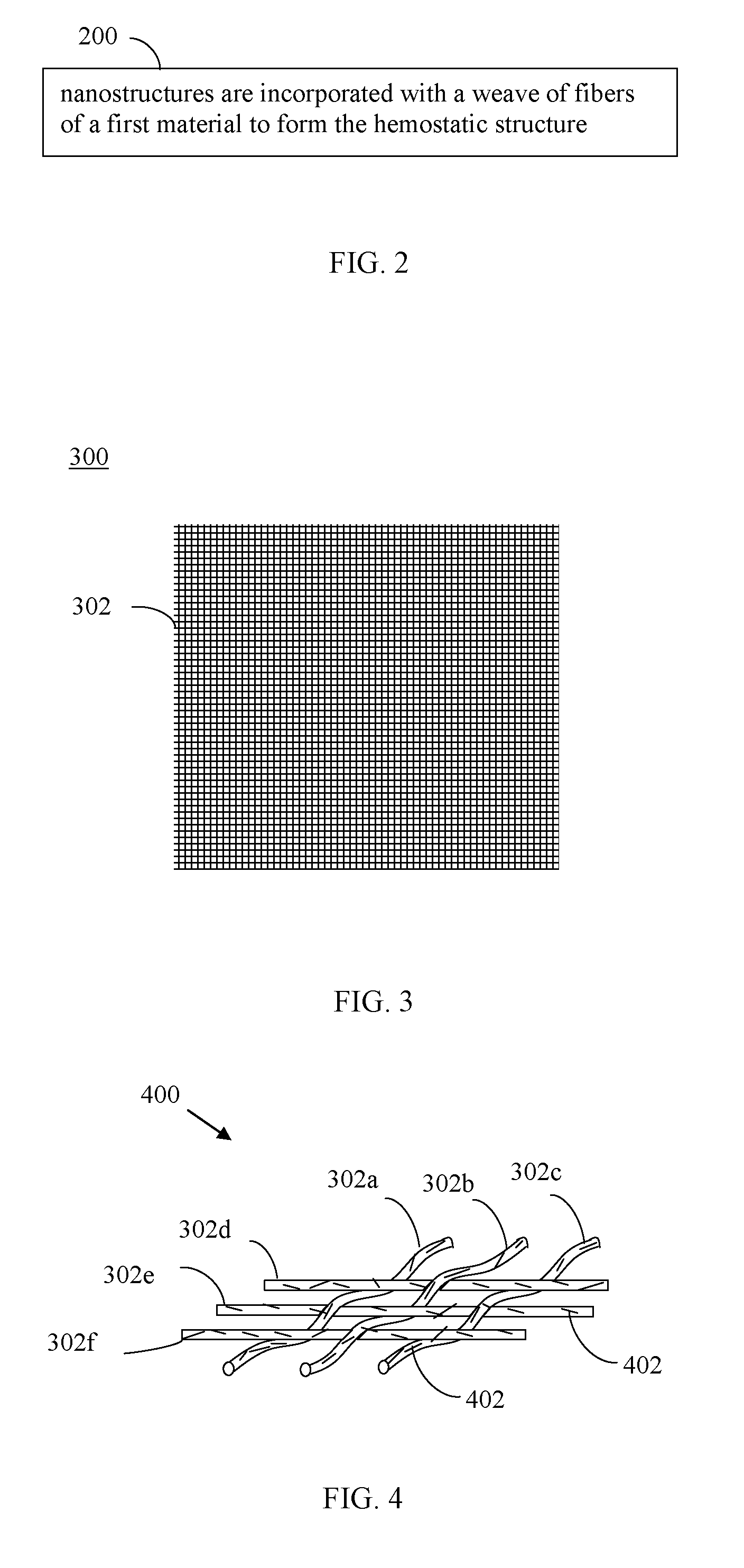Resorbable nanoenhanced hemostatic structures and bandage materials
- Summary
- Abstract
- Description
- Claims
- Application Information
AI Technical Summary
Benefits of technology
Problems solved by technology
Method used
Image
Examples
example expandable
and Absorbent Hemostatic Material Embodiments
[0118]Expandable polymers have been used for wound closure to prevent blood loss after endoscopic surgery where the entry / exit point of the endoscopic device is through a blood vessel. An example of such device is the Angioseal™ vascular closure device sold by St. Jude Medical of St. Paul, Minn. Absorbent materials, such as cotton gauze or tampon structures, have also been used for wound closure. In a device using an expandable material, blood and / or other fluids are absorbed by the material, and the material swells to cause a physical barrier. Static blood may be entrapped within pores of the material, which clots due to stasis. It would be advantageous if the blood within the expanded material could be made to clot more rapidly. Embodiments of the present invention enable an increased rate of clotting for devices based on expandable materials and non-expandable materials (e.g., cotton-based, such as gauze, tampon, and other such non-exp...
PUM
| Property | Measurement | Unit |
|---|---|---|
| Diameter | aaaaa | aaaaa |
| Length | aaaaa | aaaaa |
| Structure | aaaaa | aaaaa |
Abstract
Description
Claims
Application Information
 Login to View More
Login to View More - R&D
- Intellectual Property
- Life Sciences
- Materials
- Tech Scout
- Unparalleled Data Quality
- Higher Quality Content
- 60% Fewer Hallucinations
Browse by: Latest US Patents, China's latest patents, Technical Efficacy Thesaurus, Application Domain, Technology Topic, Popular Technical Reports.
© 2025 PatSnap. All rights reserved.Legal|Privacy policy|Modern Slavery Act Transparency Statement|Sitemap|About US| Contact US: help@patsnap.com



